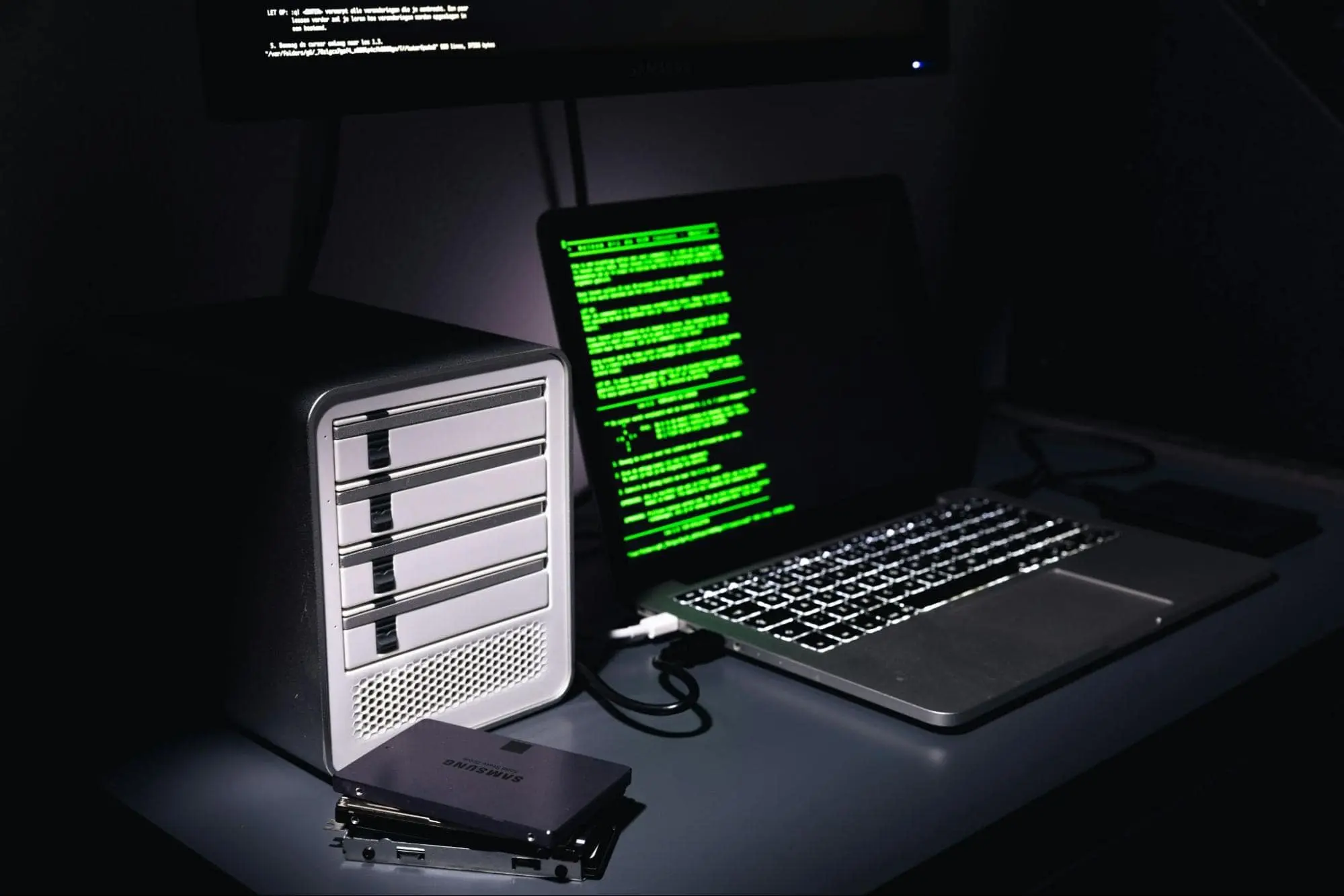AI in Cybersecurity: How Machine Learning is Fighting Cybercrime

Table of Contents
- AI in Cybersecurity: How Machine Learning is Fighting Cybercrime
- Why Traditional Cybersecurity Defenses Are No Longer Enough
- How Machine Learning Powers Cyber Defense
- Real-World Examples of AI Cybersecurity in Action
- The Role of AI Consulting in Cyber Defense
- AI Cybersecurity Challenges and Best Practices
- FAQs
- Book a Free Cyber AI Assessment
Cyberattacks have become faster, smarter, and more unpredictable and so have defenses against them. From phishing campaigns powered by generative AI to automated ransomware that mutates its code in seconds, the battlefield of cybersecurity has fundamentally changed.
Enter AI cybersecurity solutions, a growing arsenal of intelligent tools using data, analytics, and machine learning to detect, prevent, and even anticipate attacks before they happen. But how exactly is AI fighting cybercrime, and what does it mean for organizations navigating compliance, data protection, and digital transformation?
Let’s break down how artificial intelligence is reshaping cyber defense not just as a buzzword, but as a real-world force multiplier.
Why Traditional Cybersecurity Defenses Are No Longer Enough

For decades, cybersecurity was reactive. Firewalls, antivirus software, and intrusion detection systems could only respond after a known signature or pattern was found. The problem? Modern attackers don’t reuse patterns.
Sophisticated threat actors use automation, polymorphic code, and even AI-powered attacks to bypass static defenses. According to IBM’s 2024 Cost of a Data Breach Report, organizations leveraging AI and automation detect and contain breaches 108 days faster than those that don’t (source). That speed is the new currency of defense.
Machine learning (ML) changes the equation. It learns what “normal” looks like for users, systems, and networks and flags anything abnormal. Whether it’s an employee logging in from a new location or unusual data exfiltration behavior, AI can surface early warning signs that humans might miss.
How Machine Learning Powers Cyber Defense
Machine learning in cybersecurity isn’t about replacing analysts; it’s about giving them superpowers. Here’s how it works in practice.
1. Behavioral and Anomaly Detection
AI models continuously analyze patterns in network traffic, user behavior, and system events. When something deviates from the baseline like a sudden spike in outbound data, the system raises an alert.
This behavioral detection approach helps identify insider threats, compromised accounts, or new malware strains that haven’t been seen before.
2. Automated Incident Response
When milliseconds matter, AI doesn’t wait for human approval. Modern AI-driven security platforms can automatically isolate infected devices, block suspicious IPs, or roll back malicious changes in real time.
This automation minimizes human error and drastically reduces “dwell time” the window between intrusion and containment.
3. Risk Prioritization and Compliance
Not all vulnerabilities carry equal weight. AI helps organizations prioritize what truly matters by calculating risk scores based on exploitability, exposure, and potential impact.
At the same time, Data Security & Compliance with AI has become central for meeting regulations like GDPR, HIPAA, and SOC 2. AI-driven monitoring tools help ensure sensitive data is accessed and stored properly continuously, not just during audits.
4. Threat Prediction
With enough data, AI doesn’t just detect threats, it predicts them. Using Advanced Analytics & AI threat detection, models can identify early indicators of ransomware or phishing campaigns based on global threat intelligence feeds.
This allows security teams to patch weaknesses before attackers exploit them.
Real-World Examples of AI Cybersecurity in Action
- Microsoft Security Copilot, powered by OpenAI, uses generative AI to help analysts interpret alerts and investigate incidents faster.
- CrowdStrike’s Falcon platform employs ML-based anomaly detection to stop lateral movement within enterprise networks.
- Darktrace, one of the pioneers in AI threat detection, uses “self-learning AI” to model an organization’s digital DNA and autonomously respond to emerging threats.
- Even government agencies like the U.S. Cybersecurity and Infrastructure Security Agency (CISA) are investing heavily in AI-driven defense frameworks.
These systems don’t just react to them, they learn and adapt. That adaptability is what makes AI the cornerstone of modern cyber resilience.
The Role of AI Consulting in Cyber Defense

Implementing AI isn’t just a plug-and-play solution. It requires the right strategy, data pipelines, governance, and cultural readiness. This is where AI Consulting for cyber defense becomes invaluable.
AI consultants help organizations:
- Design an architecture that integrates AI seamlessly into existing security infrastructure.
- Choose the right machine learning models for detection, classification, and automation.
- Establish ethical frameworks and explainability standards (so analysts can understand AI decisions).
- Provide ongoing model tuning and risk validation to ensure accuracy.
- Train staff to interpret AI insights effectively avoiding overreliance or blind trust in automated systems.
In short, consultants turn AI from an exciting concept into a reliable, operational capability.
AI Cybersecurity Challenges and Best Practices
Even the smartest AI needs human oversight. Challenges include:
- False positives that overwhelm analysts with alerts.
- Model drift, where data patterns change and degrade accuracy.
- Adversarial AI attacks, where hackers intentionally “poison” models with misleading data.
- Privacy concerns when analyzing sensitive datasets.
To overcome these, leading organizations follow best practices:
- Combine AI with human expertise AI handles speed; humans handle context.
- Continuously retrain models with fresh, relevant data.
- Focus on explainability, use transparent AI systems that justify their decisions.
- Establish feedback loops between detection, investigation, and retraining.
When done right, AI doesn’t replace the SOC (Security Operations Center) it supercharges it.
FAQs:
How does AI strengthen cybersecurity measures?
AI strengthens cybersecurity by turning reactive defense into proactive protection. It scans millions of data points in seconds, detects anomalies, automates responses, and learns continuously from new attack vectors. This reduces response times, minimizes breaches, and frees analysts to focus on higher-level strategy.
Can Advanced Analytics & AI detect threats in real-time?
Absolutely. Advanced Analytics & AI threat detection systems operate in milliseconds, flagging abnormal behavior as it happens. For instance, AI can spot credential stuffing attempts or malicious payloads in transit before they cause damage. According to Palo Alto Networks, such systems can cut containment time by up to 70% compared to manual detection.
What role does AI Consulting play in preventing cybercrime?
AI Consulting for cyber defense bridges the gap between technology and execution. Consultants help organizations identify use cases, choose the right tools, and integrate AI safely and effectively. They also guide compliance and governance ensuring models remain auditable, unbiased, and secure from data poisoning.
How effective is machine learning in cyber defense?
Machine learning in cybersecurity is extremely effective when properly deployed. It can catch unknown malware, automate triage, and predict future attack surfaces. According to CrowdStrike, ML-based systems now prevent over 95% of previously unseen malware variants before human intervention is needed.
The Road Ahead for AI Cybersecurity
As cyber threats grow in sophistication, defenders must evolve faster. AI will soon become embedded in every layer of defense from endpoint security to network monitoring and cloud governance.
Next-generation AI will also leverage federated learning (training models without moving data), and quantum-assisted analytics for predictive threat modeling. But the golden rule will remain: AI is most powerful when humans and machines collaborate.
Organizations that embrace this synergy will lead the next era of cyber resilience.
Book a Free Cyber AI Assessment
AI isn’t the future of cybersecurity, it’s the foundation of it.
Whether you’re securing customer data, meeting compliance mandates, or building digital trust, AI-driven tools can dramatically elevate your security posture.
Book a Free Cyber AI Assessment today to discover how AI can strengthen your organization’s cyber defense, identify hidden vulnerabilities, and build a smarter, faster security strategy.
